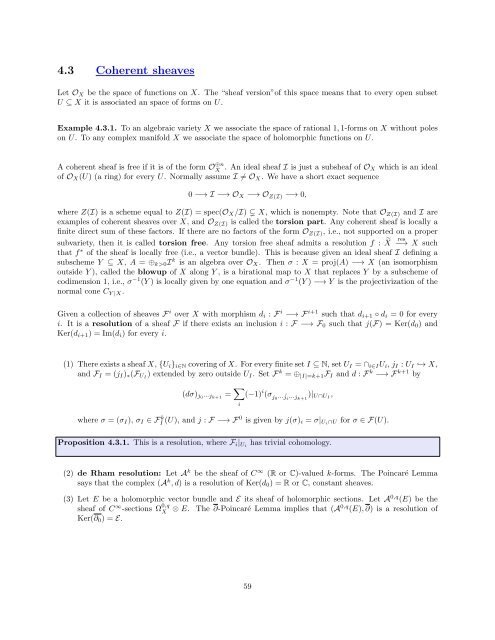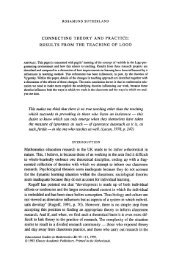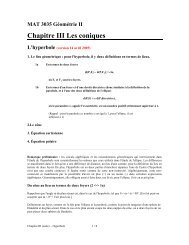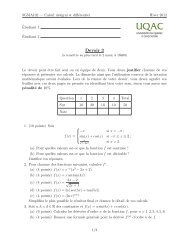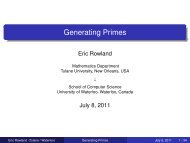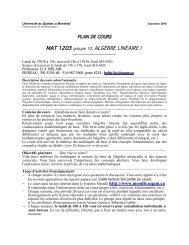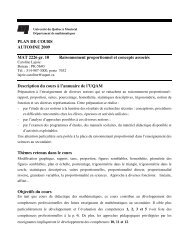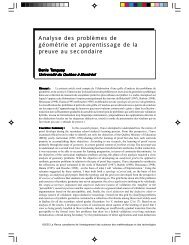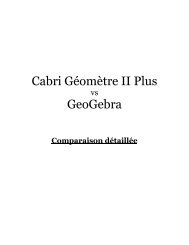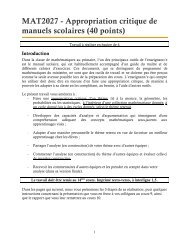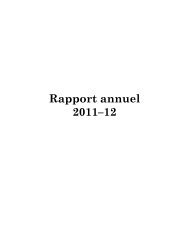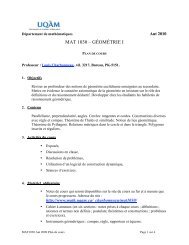COMPLEX GEOMETRY Course notes
COMPLEX GEOMETRY Course notes
COMPLEX GEOMETRY Course notes
Create successful ePaper yourself
Turn your PDF publications into a flip-book with our unique Google optimized e-Paper software.
4.3 Coherent sheaves<br />
Let O X be the space of functions on X. The “sheaf version”of this space means that to every open subset<br />
U ⊆ X it is associated an space of forms on U.<br />
Example 4.3.1. To an algebraic variety X we associate the space of rational 1, 1-forms on X without poles<br />
on U. To any complex manifold X we associate the space of holomorphic functions on U.<br />
A coherent sheaf is free if it is of the form O ⊕n<br />
X<br />
. An ideal sheaf I is just a subsheaf of O X which is an ideal<br />
of O X (U) (a ring) for every U. Normally assume I ≠ O X . We have a short exact sequence<br />
0 −→ I −→ O X −→ O Z(I) −→ 0,<br />
where Z(I) is a scheme equal to Z(I) = spec(O X /I) X, which is nonempty. Note that O Z(I) and I are<br />
examples of coherent sheaves over X, and O Z(I) is called the torsion part. Any coherent sheaf is locally a<br />
finite direct sum of these factors. If there are no factors of the form O Z(I) , i.e., not supported on a proper<br />
res<br />
subvariety, then it is called torsion free. Any torsion free sheaf admits a resolution f : ˜X −→ X such<br />
that f ∗ of the sheaf is locally free (i.e., a vector bundle). This is because given an ideal sheaf I defining a<br />
subscheme Y ⊆ X, A = ⊕ k>0 I k is an algebra over O X . Then σ : X = proj(A) −→ X (an isomorphism<br />
outside Y ), called the blowup of X along Y , is a birational map to X that replaces Y by a subscheme of<br />
codimension 1, i.e., σ −1 (Y ) is locally given by one equation and σ −1 (Y ) −→ Y is the projectivization of the<br />
normal cone C Y |X .<br />
Given a collection of sheaves F i over X with morphism d i : F i −→ F i+1 such that d i+1 ◦ d i = 0 for every<br />
i. It is a resolution of a sheaf F if there exists an inclusion i : F −→ F 0 such that j(F) = Ker(d 0 ) and<br />
Ker(d i+1 ) = Im(d i ) for every i.<br />
(1) There exists a sheaf X, {U i } i∈N covering of X. For every finite set I ⊆ N, set U I = ∩ i∈I U i , j I : U I ↩→ X,<br />
and F I = (j I ) ∗ (F UI ) extended by zero outside U I . Set F k = ⊕ |I|=k+1 F I and d : F k −→ F k+1 by<br />
(dσ) j0···j k+1<br />
= ∑ i<br />
(−1) i (σ j0···ĵ i···j k+1<br />
)| U∩UI ,<br />
where σ = (σ I ), σ I ∈ F k I (U), and j : F −→ F 0 is given by j(σ) i = σ| Ui∩U for σ ∈ F(U).<br />
Proposition 4.3.1. This is a resolution, where F i | Ui<br />
has trivial cohomology.<br />
(2) de Rham resolution: Let A k be the sheaf of C ∞ (R or C)-valued k-forms. The Poincaré Lemma<br />
says that the complex (A k , d) is a resolution of Ker(d 0 ) = R or C, constant sheaves.<br />
(3) Let E be a holomorphic vector bundle and E its sheaf of holomorphic sections. Let A 0,q (E) be the<br />
sheaf of C ∞ -sections Ω 0,q<br />
X ⊗ E. The ∂-Poincaré Lemma implies that (A0,q (E), ∂) is a resolution of<br />
Ker(∂ 0 ) = E.<br />
59


